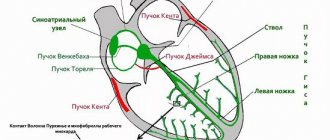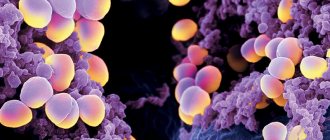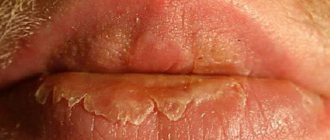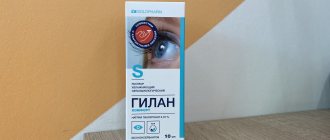August 16, 2020
Dermatitis is an inflammation of the skin that can occur due to a variety of irritants: allergens, aggressive chemicals, fungi, and adverse weather factors. Chronic inflammation of the skin also occurs with psoriasis, but in this case the condition is distinguished as a separate disease, and dermatitis is a collective concept, a syndrome that may not relate to any specific disease, occurring periodically.
What are the varieties?
Dermatitis has a complex classification. Depending on the nature of the skin disease, there are:
Simple contact
Occurs with direct physical irritation. Factors that provoke the occurrence of dermatitis are skin friction, pressure, temperature effects, alkalis, acids, poisonous plants. Surely, many have encountered this type of skin irritation. Yes, yes, we are talking about burns, frostbite, chafing, and rashes from detergent.
Contact
Symptoms appear almost immediately after contact, the area of skin damage corresponds to the area of contact with the irritant. With minor exposure, dermatitis manifests itself as mild redness and itching; acute cases may be accompanied by the appearance of blisters filled with liquid and swelling of the skin.
Allergic
This is a hyperreaction of the body to contact with certain substances. Allergic dermatitis, like all forms of allergies, manifests itself in individuals predisposed to it.
Causes of allergic type development
Unlike simple contact, allergic does not develop immediately, but after several contacts with the allergen. An allergic reaction must form; several weeks may pass from the moment of the first interaction.
Manifestation of allergic dermatitis
With the allergic type, the area of the affected skin area may be larger than the immediate site of contact with the irritant. As the disease worsens, the skin becomes bright red with pronounced swelling, weeping blisters appear, which open and erosion develops in their place. As the inflammation heals, scales and crusts form - these may be symptoms of incipient eczema.
Seborrheic dermatitis of the scalp
Irritation appears in the area of greatest accumulation of sebaceous glands - in the scalp, on the ears, and less often on the face (on the wings of the nose). Often the initial form of the disease is dandruff in the hair.
The cause is the Malassezia fungus, which is present on the skin of most people. But its excessive reproduction leads to increased peeling, and as a result, seborrhea develops.
One form of the disease is perioral cutaneous dermatitis - irritation appears near the mouth.
What can you do yourself?
To restore damaged hand skin, you need to follow a number of simple rules:
- wear gloves in cold weather;
- Use warm water and a little mild detergent to wash your hands;
- rinse off the soap well and dry your hands;
- often (at least every time after washing your hands) use moisturizing and skin softening products, as well as those that prevent skin dehydration. These are usually creams with petroleum jelly, lanolin, glycerin, ceramides, dimethicone, propylene glycol, urea, etc.
It is recommended to relieve inflammation with the help of corticosteroids (in the form of cream, lotion, foam or, better yet, ointment). If the dermatitis is severe or chronic, with noticeable thickening of the skin and is not on the face or in the area of skin folds, then clobetasol, diflucortolone, etc. are used for 2-4 weeks. In less severe cases, betamethasone, diflucortolone, mometasone, triamcinolone, etc. are used (also for 2–4 weeks). When dermatitis is on the face or in the area of skin folds, weaker corticosteroids or corticosteroids in lower dosages are used: triamcinolone, betamethasone, hydrocortisone, etc. for 1–2 weeks.
It is highly advisable not to scratch the sore spot, otherwise additional damage to the skin may create a suitable environment for bacterial infection.
After a case of acute dermatitis, recovery takes about a month if there is no further exposure to the irritating agent. With chronic contact dermatitis, symptoms may not go away for months or years.
For allergic contact dermatitis, the most important thing is to avoid the substance that caused the disease and relieve inflammation. The methods are approximately the same: wear gloves, overalls, a mask and goggles, use corticosteroids for 1-2 weeks (in severe cases it is better to take systemic drugs, that is, in tablets) or calcineurin inhibitors (for example, pimecrolimus cream).
Atopic dermatitis
Serious chronic disease. It is of an allergic nature: irritation occurs to substances that can penetrate both through contact and through the lungs and stomach. The atopic type often develops in childhood and often remains with a person for life, turning into a chronic form.
Due to the fact that dermatitis is a general name for skin diseases, symptoms and external manifestations of the disease are of great importance in diagnosis.
Treatment of simple contact and allergic dermatitis
Treatment can only be prescribed by a specialist dermatologist after a preliminary consultation and examination of the patient. Depending on the type of skin pathology, the patient may be referred to an allergist, who will study the medical history and assess the nature and extent of the lesion. This is necessary in order to determine the allergen that provoked the disease, since treatment is primarily aimed at partial or even complete elimination of the provoking substance.
Therapy used for dermatoses is divided into supportive and medicinal. The first includes cold compresses, bandages, and antihistamines. Drug treatment is carried out mainly with external topical glucocorticosteroids in the form of ointments and creams.[4] Such drugs have a versatile effect on the source of inflammation, therefore they are the most popular drugs with wide application possibilities.[5] Akriderm preparations are also local glucocorticosteroids.
Itchy skin dermatitis
Chronic inflammation of the skin, which is characterized by inflammation, itching, burning. Itchy skin is the body's reaction to irritation of nerve endings, accompanied by scratching of the skin and general increased nervousness.
Itchy dermatitis can spread throughout the body (atopic and allergic dermatitis, allergies to animal hair, pollen, etc.) and be localized - on moving parts of the body, on open areas of the skin.
Infectious dermatitis
The main causes of this disease are infections in non-healing wounds on the skin. The infectious type develops in patients with chickenpox, atopic dermatitis, or another disease if the infection gets into the rash that accompanies these diseases (often by scratching). Also, skin irritation may appear after operations and injuries due to infection with staphylococcus, streptococcus, etc.
The course of the disease is accompanied by the appearance of pustules without clear boundaries on the surface of the skin or purulent inflammation under the skin.
Professions - risk groups
This disease mainly affects medical workers, mechanics, builders, hairdressers, cosmetologists, makeup artists, cleaners, gardeners, agricultural workers, as well as people who work with food (waiters, cooks, etc.).
- The most common irritating agents are solvents, bleaches, medical alcohol, soaps, deodorants, cosmetics, sawdust, oils, and detergents.
- If you have to wash your hands regularly or the work itself involves the fact that they are often in a humid environment, then this is also a risk factor for the development of contact dermatitis.
- Allergic contact dermatitis can be caused by metals, formaldehyde (found in glue, solvents), plants, cosmetics, etc.
Red dermatitis, also known as lichen planus
This is a chronic itchy skin disease, which is accompanied by the appearance of pink-red-violet rashes, merging into large plaques, up to 10 cm in size, with the formation of garlands and rings.
Locations: the lateral part of the body, the inner surface of the arms in places of flexion, mucous membranes of the mouth and genitals.
There are several forms of damage to the skin and mucous membranes. Manifestations of the disease are very diverse: papules, spots, erosions, blisters, etc.
Prevention
There is no specific prevention. For each specific nosology, there are specific preventive measures, for example, for atopic dermatosis - avoidance of triggers (provoking factor) - contact/food allergens, aeroallergens; for mycoses - compliance with hygiene rules in the team/family, carrying out disinfection measures in public places (hotels, hairdressers, sports complexes, baths, dormitories); for infectious dermatoses - limit contact with persons who are carriers of skin diseases of infectious origin; for industrial dermatoses - use of personal protective equipment when in contact with aggressive substances at work, and so on.
How to distinguish psoriasis from seborrheic dermatitis?
Diseases are often confused. Although both diseases share common features, they also have many differences. Common characteristics include a chronic type of disease and an undulating course, the presence of rashes, itching, and peeling of the skin. What is the difference between psoriasis and dermatitis?
- Prerequisites for development. If psoriasis appears under the influence of autoimmune, endocrine, and genetic disorders, then seborrheic dermatitis is caused by increased activity of the sebaceous glands and yeast-like fungi.
- Symptoms. Despite the fact that in both cases the skin is covered with scales, their structure and appearance are different. When oily yellow crusts appear, we are talking about seborrheic dermatitis, and when dry gray, white or silvery scales form, psoriasis can be diagnosed.
- Localization. Psoriasis can affect almost all areas of the skin, and seborrheic dermatitis is localized mainly on the scalp, neck and face.
If you experience skin rashes that could be a sign of both dermatitis and psoriasis, be sure to consult a dermatologist. Usually, a qualified doctor can determine what it is by the external manifestations of the disease. If mixed symptoms occur, the dermatologist will write a referral for additional examinations.
During pregnancy
Dermatoses of pregnancy are represented by a group of specific skin diseases ( atopic eruptions of pregnancy , pemphigoid of pregnancy , polymorphic dermatosis of pregnancy and intrahepatic cholestasis of pregnancy ), which arise during gestation and resolve spontaneously after childbirth.
Let's consider polymorphic dermatosis of pregnancy, which is a self-limiting benign inflammatory disease of the skin, which is characterized by intense itching and a polymorphic rash (urticarial papules/plaques, small vesicles). The incidence rate varies between 0.45-1.0%. At the same time, about 40% of cases occur in first-time women, 30% of cases - in women with a second pregnancy, and 15% of cases - in women with a third pregnancy. Polymorphic dermatosis in most cases occurs in the 3rd trimester of pregnancy, the incidence of the disease in the 1st and 2nd trimester is significantly lower, and in the postpartum period polymorphic dermatosis is extremely rare.
Primary rashes are located mainly on the skin of the abdomen, often on the surface of “stretch marks” (stretch marks). At the same time, the skin of the peri-umbilical area is not affected. Less commonly, rashes spread to the breasts, lower back, buttocks, thighs and upper limbs. Damage to the mucous membranes/skin of the scalp, face, palms, and soles is uncharacteristic. Subsequently, the primary elements evolve into scales/crusts, and later into unstable hypopigmented spots. There is no scarring process (photo below).
The duration of the rash varies between 3-6 weeks, and its maximum severity is observed in the first week of the rash. Itching is moderate to severe, with virtually no excoriation. As a rule, the rash resolves on its own, and there are no associated complications for the fetus and the woman. Children do not develop rashes after birth.
Treatment is carried out by prescribing topical steroid drugs of groups II-V ( Laticort , Flucinar , Lorinden , Oxycort ), antipruritic lotions (Calamine lotion "Sarna") and cool compresses.
Reasons for appearance
The main factors that can trigger the appearance of one or another form of dermatitis have already been listed. All inflammation and irritation of skin diseases are the result of remote or provoked causes.
- Remote ones include genetic predisposition or acquired individual predisposition. The latter occurs, for example, due to allergies or a previous infectious disease.
Related causes that trigger the development of dermatitis are various conditions to which the body reacts with skin irritation. These include stress, contact with chemicals, reaction to climate, and hormonal changes in the body.
Regardless of what resulted from the onset of the disease, remember: dermatitis must be treated immediately before it becomes protracted and chronic.
Diet
Hypoallergenic diet
- Efficacy: therapeutic effect after 21-40 days
- Timing: constantly
- Cost of products: 1300-1400 rubles. in Week
Diet for skin diseases
- Efficacy: therapeutic effect after a month
- Time frame: three months or more
- Cost of products: 1400-1500 rubles per week
Diet for dermatitis
- Efficacy: Therapeutic effect after 3 weeks
- Timing: Constantly
- Cost of products: 1300-1390 rubles per week
Diet for psoriasis
- Efficacy: healing effect
- Timing: constantly
- Cost of products: 980-1150 rubles per week
In the complex therapy of dermatoses, rational dietary nutrition is the most important method of treatment. This primarily applies to allergic/pruritic dermatoses, but is also important for dermatoses of other groups. For this purpose, Diet for Dermatitis , Hypoallergenic Diet , Diet for Skin Diseases , Diet for Psoriasis , and so on may be prescribed.
Since almost any dermatosis has an allergic component, it is recommended to exclude from the diet foods that have a high sensitizing activity, contain histamine or contribute to its production (chocolate, cow's milk, strawberries, coffee, cocoa, orange juice, hard cheeses, smoked meats, tomatoes, hazelnuts , tuna, herring) and artificial food additives.
In case of atopic / seborrheic dermatitis, all easily digestible carbohydrates (jam, sugar, sweet pastries, preserves, confectionery, condensed milk, sweets, honey) are subject to restriction. Also excluded are smoked meats, sausages, seafood, rich broths, red meat, marinades/sauces, canned fish/meat, seasonings (mustard, horseradish, vinegar, ketchup, mayonnaise), pickled vegetables, mushrooms, spicy dishes, salt, sauces, animal fats. , sweet drinks and alcoholic drinks.
For a number of dermatoses, it is necessary to exclude specific groups/types of foods from the diet, for example, for bullous dermatoses ( Dühring's dermatitis herpetiformis ) - exclusion of foods containing glutin and iodine. A particularly strict diet should be followed for chronic recurrent dermatoses during exacerbation.
Dermatitis on the skin of the body
A dermatologist can diagnose the disease. Contact him if you notice the first symptoms.
Symptoms
Typical manifestations of skin disease:
- redness
- itching
- combs
- pustules
- peeling skin
Allergic dermatitis can be accompanied by a prolonged runny nose, paroxysmal cough, nasal congestion and sneezing. Acute dermatitis is usually characterized by the formation of subcutaneous blisters filled with colorless liquid. With wet dermatitis, redness and deep cracks form on the skin, from which pus or lymph oozes. Dry dermatitis is characterized by flaking and a feeling of tightness of the skin. Since it is possible to cure your skin, you should never give up, no matter what the symptoms of the disease are!
Treatment is real!
How to treat allergic dermatitis is an individual question. Sometimes it is enough to eliminate the irritating substance, sometimes drug therapy is necessary.
Treatment of any type of dermatitis, even such a complex form as chronic itching, begins with determining the source of such a reaction. Often you just need to stop contact with the irritating substance, and the reaction on the skin will gradually go away on its own. In more complex cases, therapy with antihistamines is necessary.
Treatment at home is only possible for mild skin lesions and a known cause. If you have any suspicions or doubts, you should contact a professional.
The answer to the question “How to cure dermatitis?” should be added a little: treatment of dermatitis should be accompanied by maintaining a healthy lifestyle. After all, irritation on the skin can occur with general weakening of the body. Therefore, it is necessary to switch to a diet of natural hypoallergenic products, maintain hygiene of the affected areas, and limit the use of decorative cosmetics that do not allow the skin to breathe.
An important aspect is the impact on the symptoms of the disease in order to relieve itching, eliminate the feeling of dryness and tightness of the skin - this is usually what worries patients the most, preventing them from leading a full lifestyle.
Symptoms
Allergic reactions can be acute and rapid (within 24-48 hours), or take several days or months to first appear. Such reactions are usually very itchy, papular, with an unclear outline of the manifestation. The skin turns red. Vesicular and oozing areas of the lesion may occur. Ulceration is rare. Irritant contact dermatitis
more often associated with a local increase in temperature and a stinging sensation. The skin may be cracked, rough and dry. Redness, oozing of the affected areas, and inflammation may develop with chronic irritant contact dermatitis. Pain may be present if the skin is cracked and the area is very tender. Both forms of contact dermatitis are found on areas of the body that are exposed to the pathogen. Thus, the hands, especially the interdigital areas, are a typical location. Eczematous lesions with oozing, papules, crusts, or thickenings are often present.
Ointment "La-Cri" - a reliable assistant
To care for affected skin, either alone or in combination with ongoing therapy, we recommend using La Cree cream. This is a non-hormonal product that does not contain dyes or fragrances, and therefore is suitable even for newborns, nursing and pregnant women.
The natural composition of the cream is selected in such a way as to simultaneously solve all the problems of irritated skin. The product perfectly relieves redness and itching, promotes rapid regeneration of damaged skin, nourishes and softens even very dry and flaky skin.
As an auxiliary product, you can use the non-greasy emulsion “La-Cri”, which provides gentle care for the skin, moisturizing it and protecting it from drying out. Treatment of dermatitis on the face will be faster with La-Cri washing gel, which gently cleanses delicate skin without clogging pores.
Experts' opinion
The conducted clinical study proves the high efficiency, safety and tolerability of products for daily skin care of children with mild and moderate forms of atopic dermatitis and during remission, accompanied by a decrease in the quality of life of patients. As a result of therapy, a decrease in the activity of the inflammatory process, a decrease in dryness, itching and flaking was noted.
The products are recommended by the St. Petersburg branch of the Union of Pediatricians of Russia.
It has been empirically proven that La Cree emulsion moisturizes and nourishes the skin, relieves itching and irritation, and also soothes and restores the skin.
Preparations for external use
Dermatitis on the hands is often accompanied by itching, which gets worse at night. Many patients complain of waking up in the middle of the night and being unable to fall back to sleep. In such cases, it is recommended to wear cotton gloves before going to bed and take a light herbal sleeping pill.
Acute inflammatory process is relieved with glucocorticoid ointments or creams. Depending on the severity of the lesion, the use of drugs of weak or moderate effect is prescribed. If skin lesions spread and affect not only the skin of the hands, but also other parts of the body, the use of strong hormonal drugs is necessary. Since dermatitis on the hands is accompanied by swelling and burning, patients are often prescribed creams. Due to their structure, they have a cooling effect, which helps reduce swelling, and a rapid antipruritic effect. Weak hormones include hydrocortisone, and moderate hormones include prednisolone, fluocortolone, and prednicarbate. Glucocorticoid creams are used for a limited amount of time, usually no longer than a week.
Relieving acute inflammation is only the first step of therapy. The chronic stage is also characterized by itching (albeit not as intense) and, most importantly, dry skin. Dryness provokes peeling and cracks that interfere with the healing of the skin. To normalize metabolic processes in the skin, including water balance, it is necessary to resort to additional hydration. The greatest effect comes from applying creams after hygiene procedures. Under the influence of warm (but not hot) water, the epidermis softens, and the crusts dissolve and come off.
However, it is worth noting that washing your hands with soap will most likely lead to a negative result, since alkali dries out the skin and, once it gets into the wounds, causes tingling and exudate. Delicate care is provided by special medicinal and cosmetic care products for inflamed skin. Thus, “Losterin” body gel, which can also be used as hand soap, does not contain surfactants, fragrances or dyes. And 4 types of vegetable oils in its composition, deresined naphthalan and Japanese sophora extract provide both cleansing, bactericidal effect, and moisturizing of the skin. In the acute period, it is recommended to cleanse the skin of the hands with micellar water and clean soft wipes.
After water procedures, the skin is carefully blotted (do not wipe!) with a towel and moisturizer is applied. For hand skin dermatitis, creams containing vegetable oils and panthenol are useful, which create a thin fatty film on the surface of the skin and do not allow the liquid to evaporate. Vegetable oils can be applied to the skin in the form of lotions, or they can be included in creams. Traditionally, olive, flaxseed, sea buckthorn, sunflower oil, avocado and jojoba oils are used in dermatology. In addition, products with the addition of plant extracts and vitamins are needed. These components provide nutrition to skin cells and accelerate regeneration. Preparations containing tar, naphthalan, salicylic acid, and zinc help relieve skin itching.
The restoration of epithelial cells is facilitated by preparations with propolis. This natural remedy has desensitizing, anti-inflammatory and regenerative properties due to its composition. Propolis contains flavonoids, aromatic and fatty acids, free amino acids, proteins, alcohols, minerals, sugars, vitamins, steroids, and many microelements. However, ointments, sprays and creams with propolis can be prescribed only to those people who are not allergic to honey and pollen. In other cases, the product may cause a severe allergic reaction.
In most cases, chronic dermatitis on the hands can be treated with external herbal medicine. It can be combined with hygienic procedures. For example, after an evening shower, it is useful to take hand baths with extracts or infusions of pine needles, chamomile flowers, oak bark, calendula, birch buds, string, burdock root, plantain leaves, poplar buds, and lungwort. After a 10-minute bath, the skin of the hands is also dried with a towel and moisturizer is applied.
How to care for skin with dermatitis?
Helping herbs
Many plants have an amazing property - when absorbed into the skin, they reduce inflammation and normalize its structure. Therefore, a common remedy for the treatment of dermatitis is herbal compresses, wraps, and herbal ointments for dermatitis.
You can use a single plant or herbal mixtures that contain several herbs.
- Grind the celandine and squeeze the juice out of the resulting mass. Dilute the juice with boiled water in a ratio of 1 to 2. Use the solution for compresses: soak gauze in it and apply to the affected skin for 10-15 minutes.
- 1 tbsp. Pour 100 ml of boiling water over a spoonful of dry crushed string and leave until a dark brown solution is obtained. Moisten gauze or bandage in the prepared concentrate and apply it to the irritated skin until completely dry (not with weeping dermatitis, otherwise the bandage may dry to the skin). The procedure can be carried out 3 times a day.
Recipe with tar soap
The healing properties of tar have been known for a very long time. This thick oily liquid has a positive effect on the condition of the skin. Birch tar has an anti-inflammatory and antiseptic effect, improves blood circulation and stimulates skin regeneration.
You can find tar soap on sale and use it to wash skin affected by dermatitis, or prepare soap according to a folk recipe.
- Mix 100 g of crushed and melted baby soap with 2 tbsp. spoons of any oil, add 2 tbsp. fly in the ointment and 100 ml of water. Mix the resulting mixture until smooth.
Chatterbox
Prepare a semi-alcohol solution: to do this, dilute 40 ml of alcohol with the same volume of water. Add 2 ml of 2% lidocaine or novocaine to the resulting solution - this will help relieve the painful symptom.
Add 30 g of dry white clay and the same amount of powdered zinc. Mix thoroughly until smooth.
The finished mash is applied to the affected skin, previously cleaned with an antiseptic, in a thin layer, the mixture is left on the skin for 20 minutes. There is no need to apply a bandage on top; excess talker can be carefully removed, and the remaining part on the skin forms a protective film.
Remember! Do not self-medicate, consult a doctor!
Cutaneous dermatitis is a general name for skin disorders caused by various irritants. All irritants can be divided into 2 large groups: those that cause irritation upon direct contact and those that affect the body when they get inside.
Sources:
- Molochkova Yulia Vladimirovna, Dermatology. Brief reference book, publishing house: GEOTAR-Media, 2017
- Baumann Leslie, Cosmetic Dermatology. Principles and practice, publishing house: MEDpress-inform, 2016
- Ratner Desiri, Avram M.R., Avram M.M., Procedures in Dermatology. Clinical cosmetology, Publishing house: GEOTAR-Media, 2019
- Sukolin Gennady Ivanovich, Clinical dermatology. A short guide to the diagnosis and treatment of dermatoses, publishing house: Notabene, 2017
Photos of dermatitis
Photo album on the diseaseList of sources
- Kirichenko I.M. Modern approaches to the treatment of infectious skin diseases. Cons. Med. 2006; 8 (1): 8-10.
- Korotkiy N.G., Taganov A.L., Tikhomirov A.A. Modern external therapy of dermatoses (with elements of physiotherapy). Ed. N. G. Korotkoy. Tver: Provincial Medicine, 2001.
- Albanova V.I., Nefedova M.A. Acquired epidermolysis bullosa: difficulty of diagnosis. Bulletin of Dermatology and Venereology 2021, No. 2; With. 65-72.
- Clinical dermatovenerology. Guide for doctors in 2 volumes. Ed. Yu. K. Skripkina, Yu. S. Butova. M.: GEOTAR-Media, 2009. T. 1, 720 p. T. 2, 928 p.
- Federal clinical guidelines. Dermatovenereology 2015: Skin diseases. Sexually transmitted infections. — 5th ed., revised, and additional. - M.: Business Express, 2021. - 768 p.







